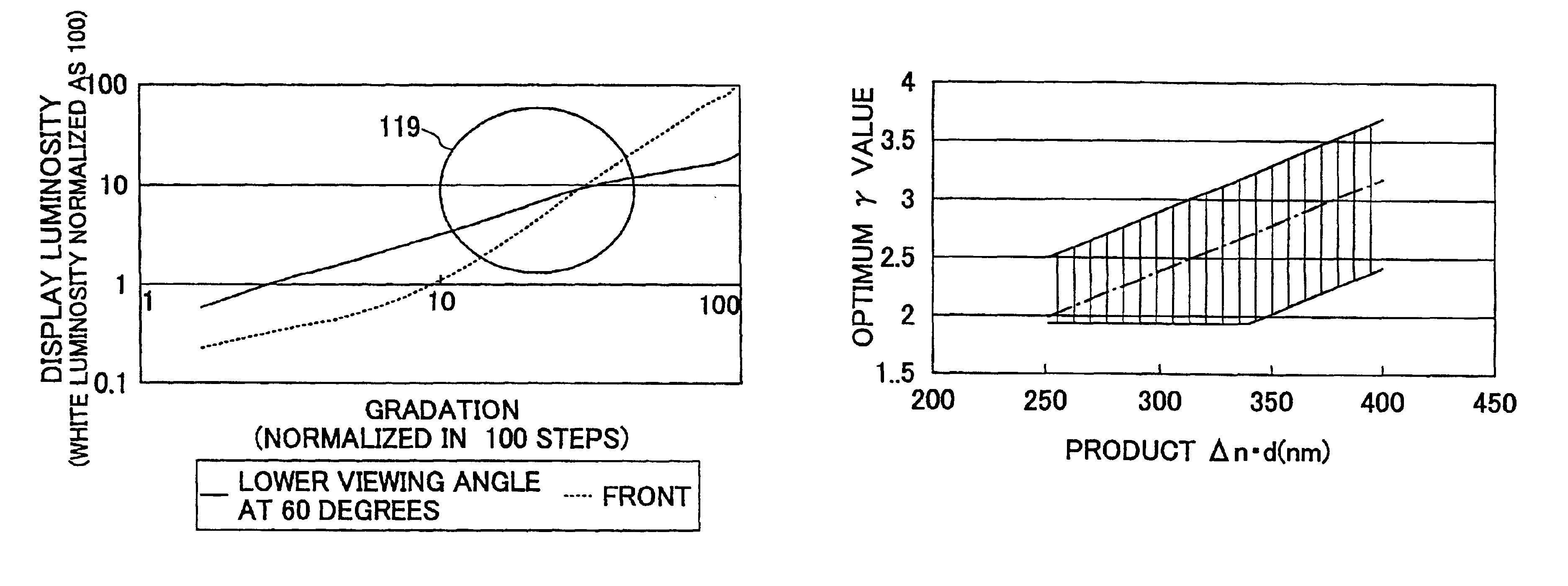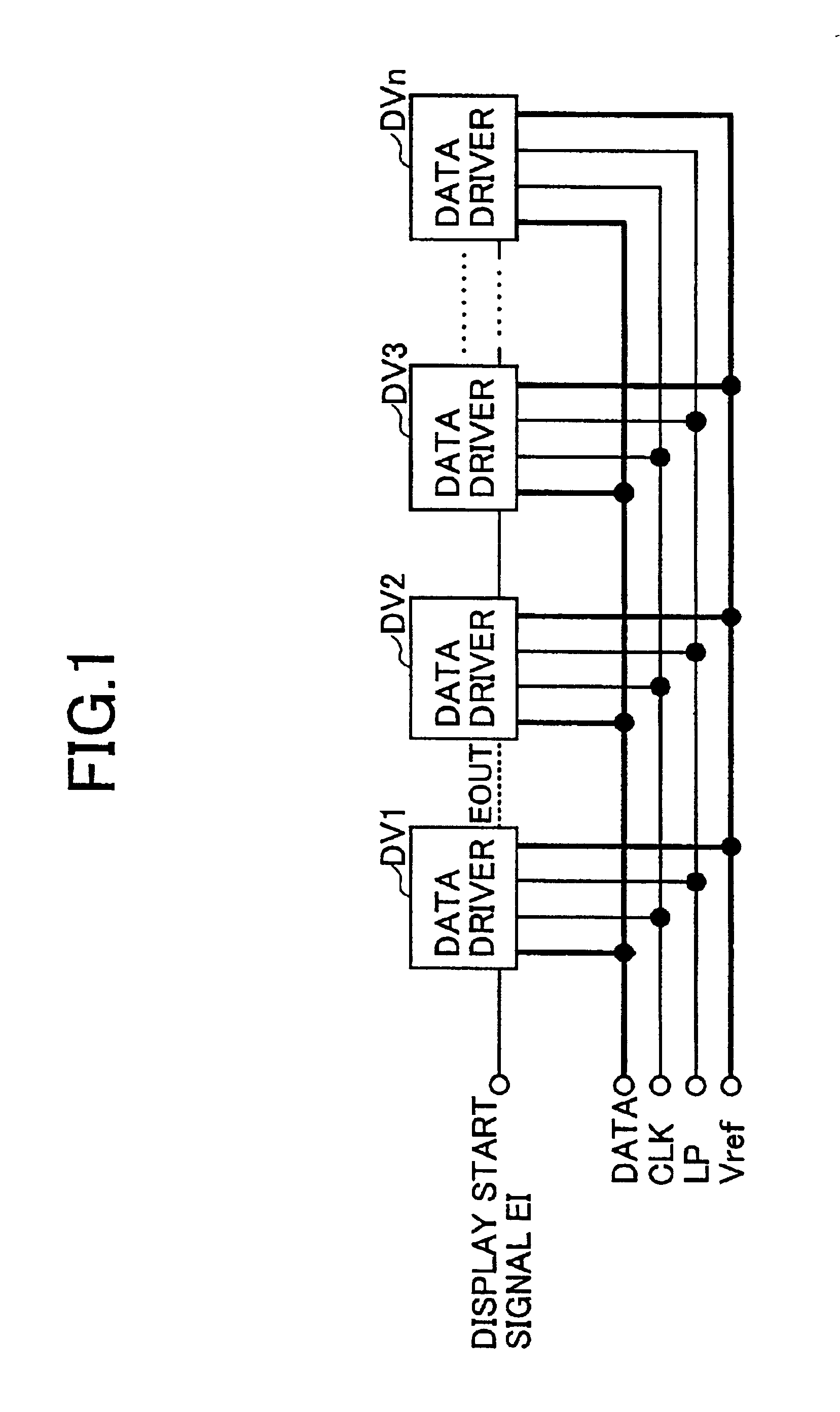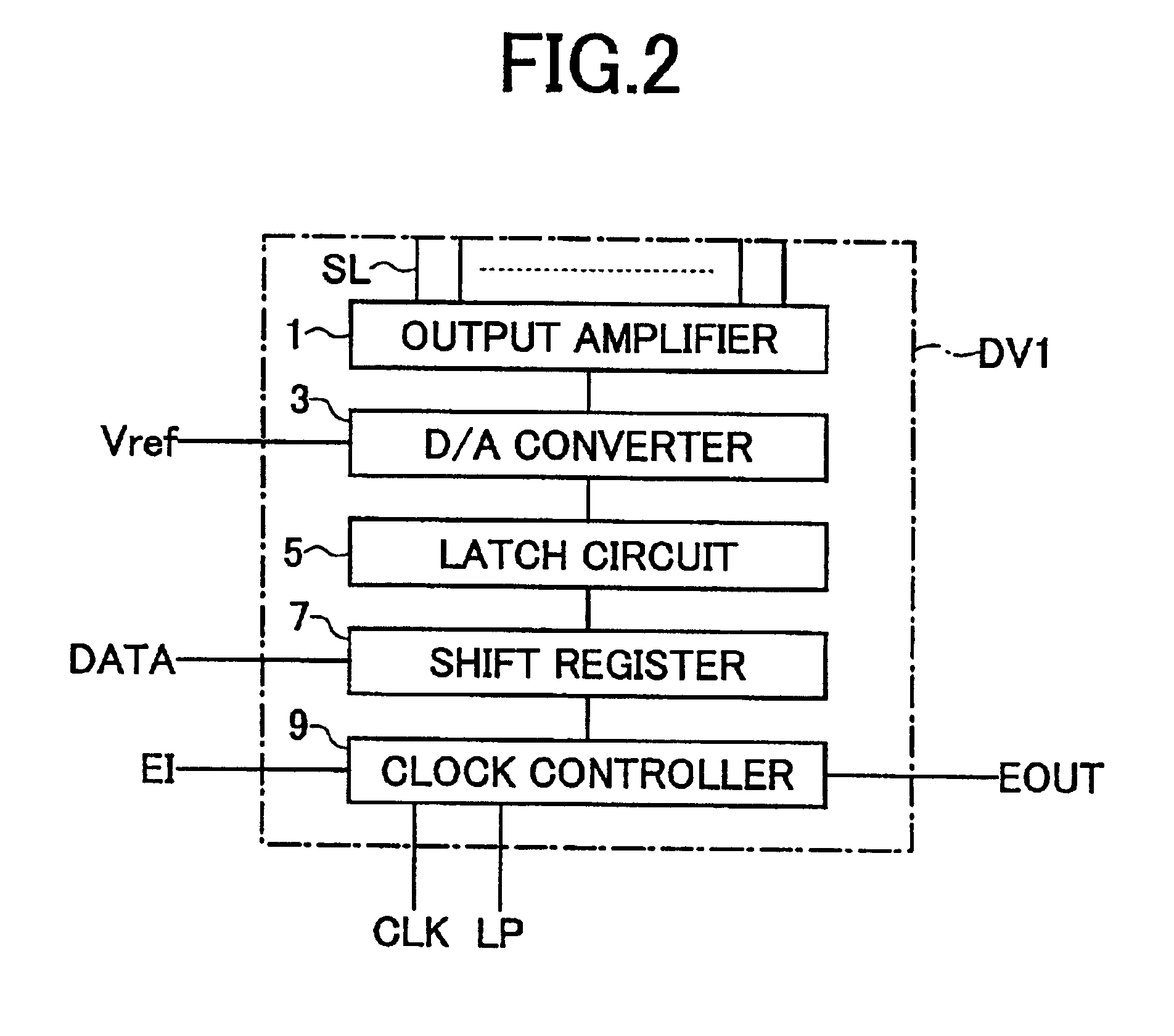Liquid crystal display apparatus and reduction of electromagnetic interference
- Summary
- Abstract
- Description
- Claims
- Application Information
AI Technical Summary
Benefits of technology
Problems solved by technology
Method used
Image
Examples
second embodiment
Generally, in the conventional liquid crystal display apparatus, a single edge driving or a double edge driving is adopted. The “single edge driving” is a driving method wherein a data signal is taken in to a data driver using a timing of the level change from one level to the other, e.g., from the low level to the high level with the clock signal of a cycle T as shown in FIG. 18. Further, the “double edge driving” shown in FIG. 19 is a driving method wherein a data signal is taken in to a data driver at a timing of both edges, i.e., logic level changes, with the clock signal of cycle 2T.
In addition, the clock signal (double edge clock signal) of cycle 2T is generated by the circuit that includes a delay flip flop (D-FF) circuit 81 and an inverter 83 as shown in FIG. 20. Here, the input node of the inverter 83 is connected to the output node of the D-FF circuit 81, and the output node of the inverter 83 is connected to the D terminal of the D-FF circuit 81.
In the circuit which has s...
third embodiment
With the data processing speed of systems becoming higher, system driving clock of information machines and equipment is accelerating. Accordingly, circuits are driven by high frequency clocks, causing an increasing necessity of suppressing the noise level of EMI.
Here, although the measures of using a bead and a filter or strengthening a shield structurally have conventionally been taken, in the present condition that drive frequency becomes high, there is a problem that the conventional methods of only eliminating the noise of a clock waveform are insufficient.
Further, although there is the method of moving the frequency of a clock as a solution means, thereby scattering the peak of harmonics, it has a problem that the frequency-shifted clock is asynchronous to the original clock, causing an inability to take synchronization with data.
Then, in the liquid crystal display apparatus of the third embodiment of the present invention, the noise level concentrated on one point is scattere...
fourth embodiment
In the display of a middle tone, a problem is that the whole picture becomes white and contrast falls, as shown in FIG. 6. The problem has turned out to be peculiar to an MVA type liquid crystal display apparatus or a liquid crystal panel with divided orientation.
Here, FIG. 32 shows the T-V characteristics (applied voltage dependability of transmissivity) in a lower viewing-angle direction (a liquid crystal molecule responds so that it may incline in the four directions of the upper right, the lower right, the upper left, and the lower left) of an MVA type liquid crystal panel. Although the T-V characteristic surges at the portion 17 corresponding to a middle tone as shown in FIG. 32, it is because the effective birefringence index of the liquid crystal molecule which inclines in the direction of a viewer who observes the liquid crystal panel becomes small.
On the other hand, FIG. 33 is a histogram showing the relation between the gradation and the number of dots within the display a...
PUM
 Login to View More
Login to View More Abstract
Description
Claims
Application Information
 Login to View More
Login to View More - R&D
- Intellectual Property
- Life Sciences
- Materials
- Tech Scout
- Unparalleled Data Quality
- Higher Quality Content
- 60% Fewer Hallucinations
Browse by: Latest US Patents, China's latest patents, Technical Efficacy Thesaurus, Application Domain, Technology Topic, Popular Technical Reports.
© 2025 PatSnap. All rights reserved.Legal|Privacy policy|Modern Slavery Act Transparency Statement|Sitemap|About US| Contact US: help@patsnap.com



